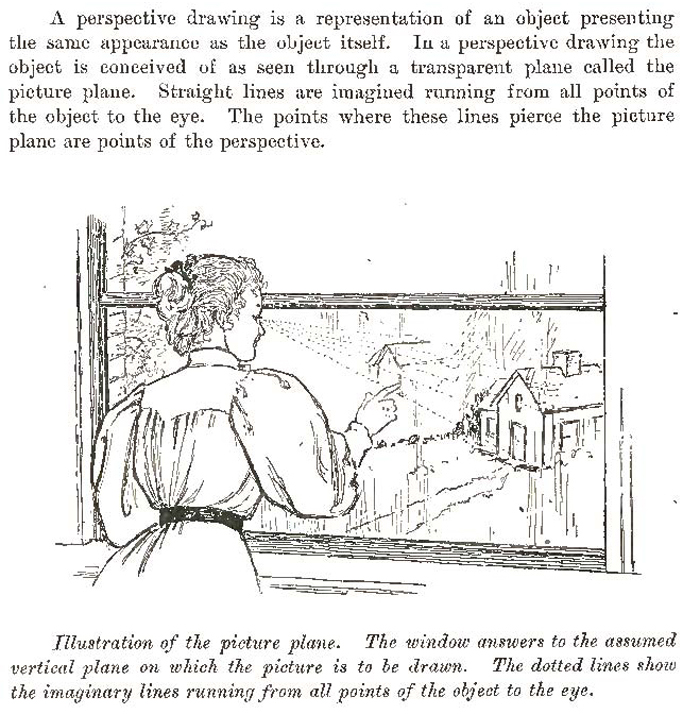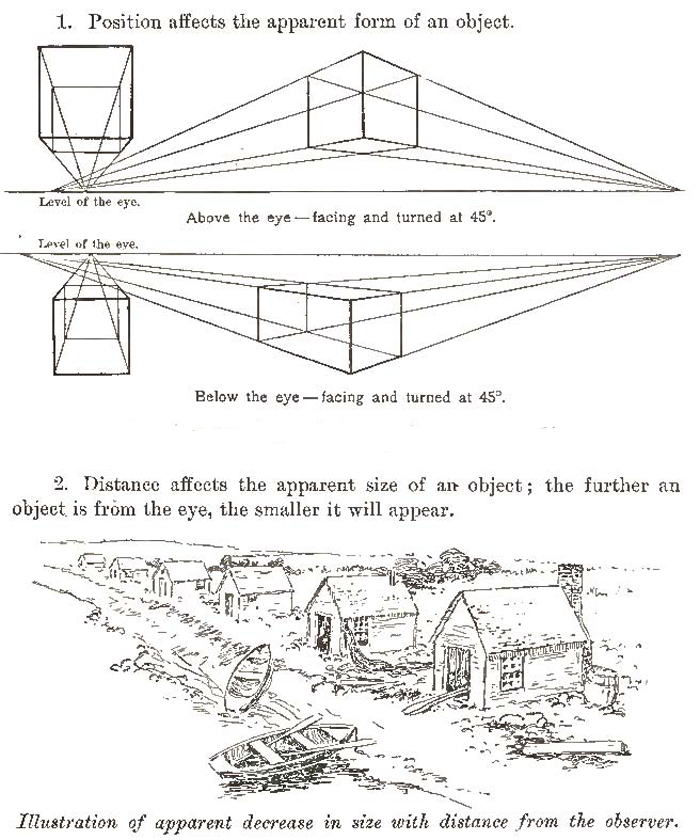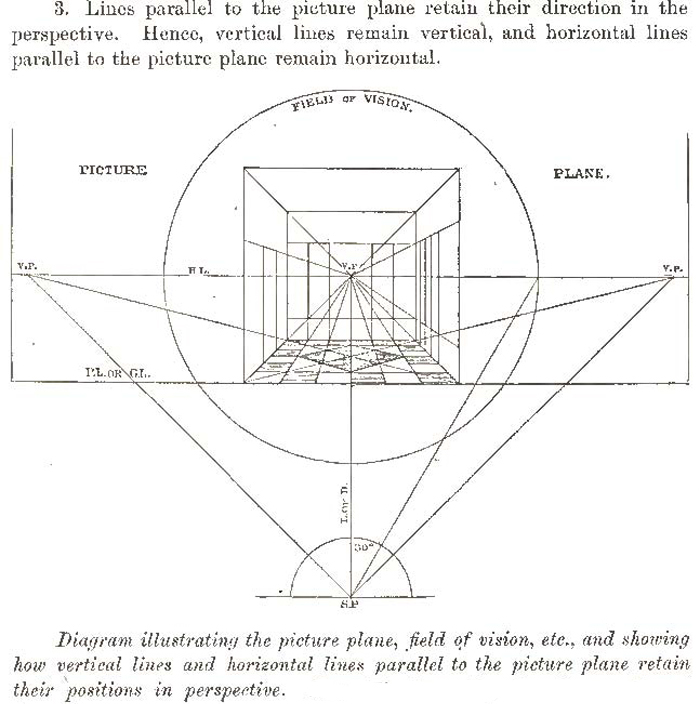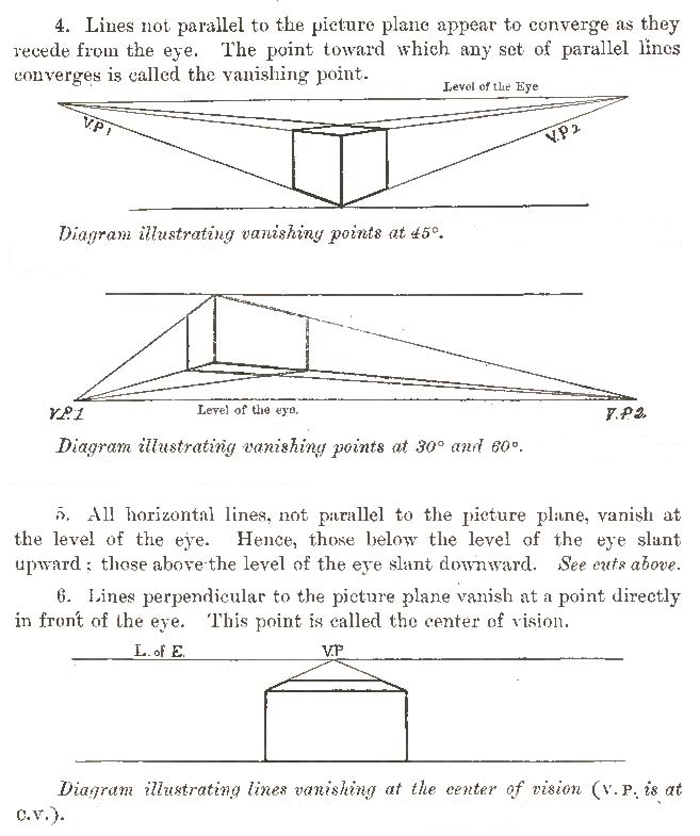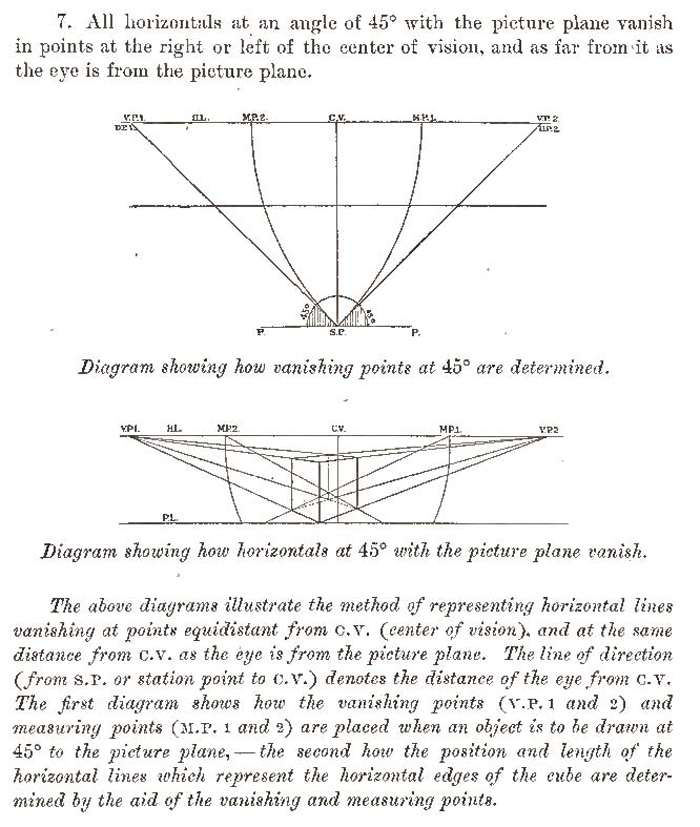Home > Directory of Drawing Lessons >Perspective Drawing >Basics of Perspective Drawing Tutorials
BASICS OF PERSPECTIVE DRAWING FOR BEGINNERS AND KIDS : Easy Guide to Perspective
|
|
BASICS OF PERSPECTIVE DRAWING
A. REPRESENTATION OR PICTORIAL DRAWING.Pictorial drawings.Freehand and instrumental. In this work the quality of line depends on the character of the object represented and the conditions under which it is seen. If it is near the observer, and has sharp, well defined edges, the lines should be well defined. If it has less sharply defined edges, or if it is remote from the observer or in shadow, its outlines should be represented by soft, broad, or broken lines. Contours of objects with smooth, even surfaces are indicated by even, narrow lines ; irregular and rough surfaces by broader, softer, or broken lines. In all instrumental work the lines should be clear and well defined. Light and shade.In both freehand and instrumental work expression by light and shade may be required. Example of rendering in light and shade. Theoretic perspective.It is expected that students will be familiar with the following terms and principles of scientific perspective, and will be able to apply them both in freehand and in instrumental work : — 1. Position affects the apparent form of an object. Above the eye—facing and turned at 45 degrees. 6. Lines perpendicular to the picture plane vanish at a point directly in front of the eye. This point is called the center of vision. The above diagrams illustrate the method of representing horizontal lines vanishing at points equidistant from acv (center of vision), and at the same distance from c.v. as the eye is from the picture plane. The line of direction (from S.P. or station point to c.v.) denotes the distance of the eye from c.v. The first diagram shows how the vanishing points (vanishing point 1 and 2) and measuring points (Measuring Points 1 and 2) are placed when an object is to be drawn at 45° to the picture plane, — the second how the position and length of the horizontal lines which represent the horizontal edges of the cube are determined by the aid of the vanishing and measuring points. |
Privacy Policy ...... Contact Us





